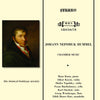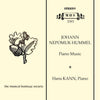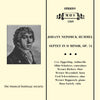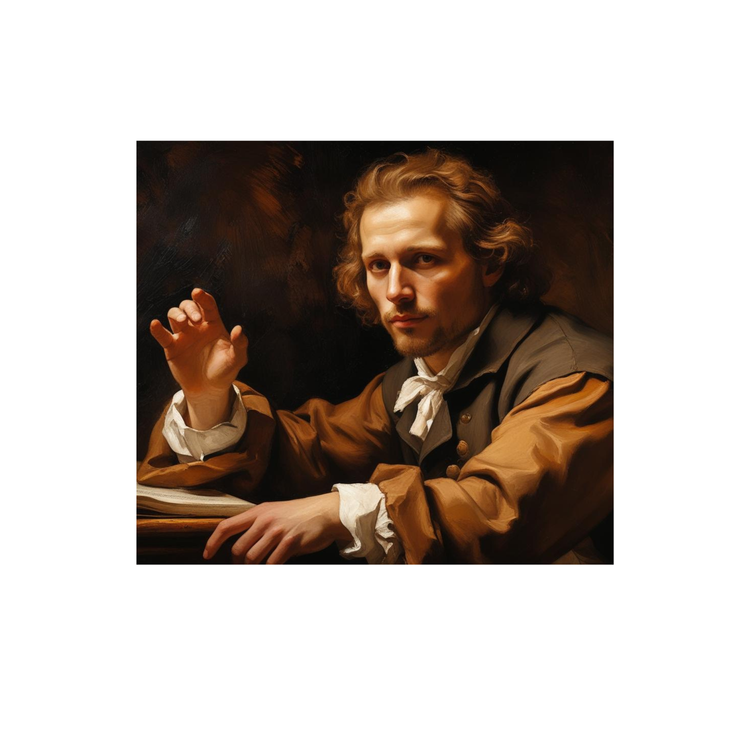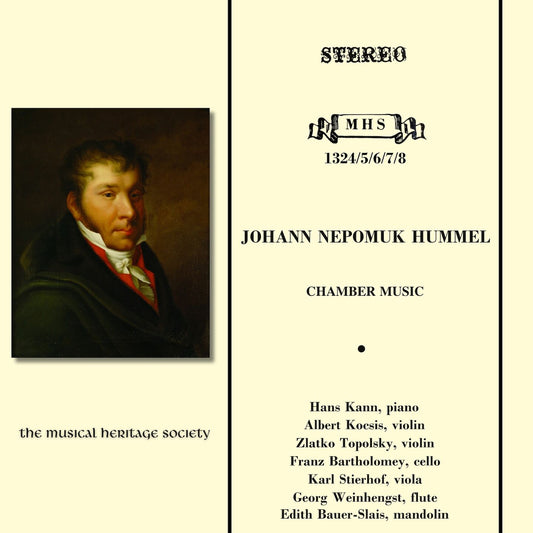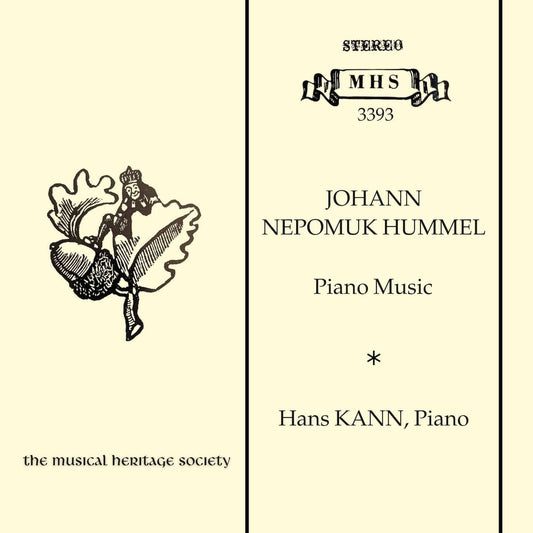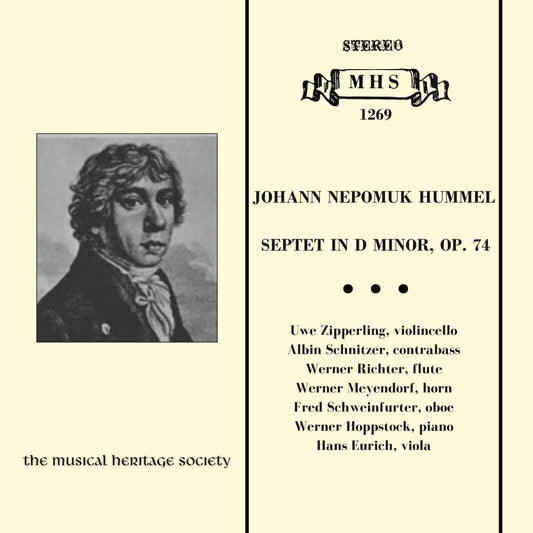Collection: JOHANN NEPOMUK HUMMEL (1778-1837)
Born in Pressburg (now Bratislava, Slovakia), Hummel's prodigious talent was evident from a young age. His father, a musician, recognized his son's gift and, in a move that would shape his early development, secured him lessons with Wolfgang Amadeus Mozart in Vienna. For two years, from the age of eight, Hummel lived with the Mozart family, absorbing the master's style, particularly his emphasis on clarity, elegance, and improvisational skill. This period was formative, instilling in Hummel a deep understanding of Classical form and finesse.
Following his time with Mozart, Hummel embarked on an extensive European tour as a child prodigy, dazzling audiences from Germany and Denmark to England and Scotland. He furthered his studies with Muzio Clementi in London, Johann Georg Albrechtsberger (Beethoven's teacher) for counterpoint, and Antonio Salieri for vocal composition and aesthetics in Vienna. These diverse influences helped him cultivate a well-rounded musical persona.
Hummel's career truly began to flourish in the early 19th century. After a brief and somewhat unhappy tenure as Kapellmeister for Prince Esterházy (succeeding Haydn), he focused more on teaching and performing. His reputation as a pianist was immense. His playing was renowned for its pearling clarity, elegant ornamentation, and dazzling speed, contrasting with the more overtly passionate and powerful style of Beethoven. While often positioned as rivals, particularly by their respective admirers, Hummel and Beethoven maintained a complex relationship marked by periods of friendship and estrangement, though mutual respect generally prevailed.
In 1816, Hummel became Kapellmeister in Stuttgart, and then in 1819, he accepted the prestigious position of Grand Ducal Kapellmeister in Weimar, where he remained until his death. This was his most stable and productive period. He revitalized the musical life of Weimar, conducted the court orchestra, composed extensively, and attracted many talented students.
As a composer, Hummel was prolific, writing in virtually every genre. His piano concertos, particularly No. 2 in A minor and No. 3 in B minor, are significant works that showcase his virtuosic style and bridge the gap between Mozart's concertos and the grander Romantic concertos of Chopin and Liszt. His Trumpet Concerto in E-flat major remains his most frequently performed work today, a staple of the trumpet repertoire. He also composed numerous piano sonatas, chamber works (like the popular Septet in D minor), masses, operas, and Lieder.
Hummel's music is characterized by its melodic grace, brilliant passagework, rich harmonies, and impeccable craftsmanship. While firmly rooted in Classical traditions, it often anticipates Romantic sensibilities through its lyrical expressiveness and expanded virtuosity. He was also an innovator in piano technique, and his influential treatise, "A Complete Theoretical and Practical Course of Instruction on the Art of Playing the Piano Forte" (1828), codified many aspects of early 19th-century pianism and was widely used.
Furthermore, Hummel was a shrewd businessman, successfully negotiating favorable terms with publishers and advocating for composer's rights, an early proponent of music copyright.
Though his fame was somewhat eclipsed by the rising tide of more overtly Romantic composers like Chopin and Liszt later in the 19th century, Johann Nepomuk Hummel's contributions were immense. He was a supreme virtuoso, a gifted composer whose works are increasingly being rediscovered and appreciated, and an influential teacher who shaped a generation of musicians. He remains a crucial link between the refined elegance of Classicism and the expressive intensity of Romanticism, a true master of his time.

